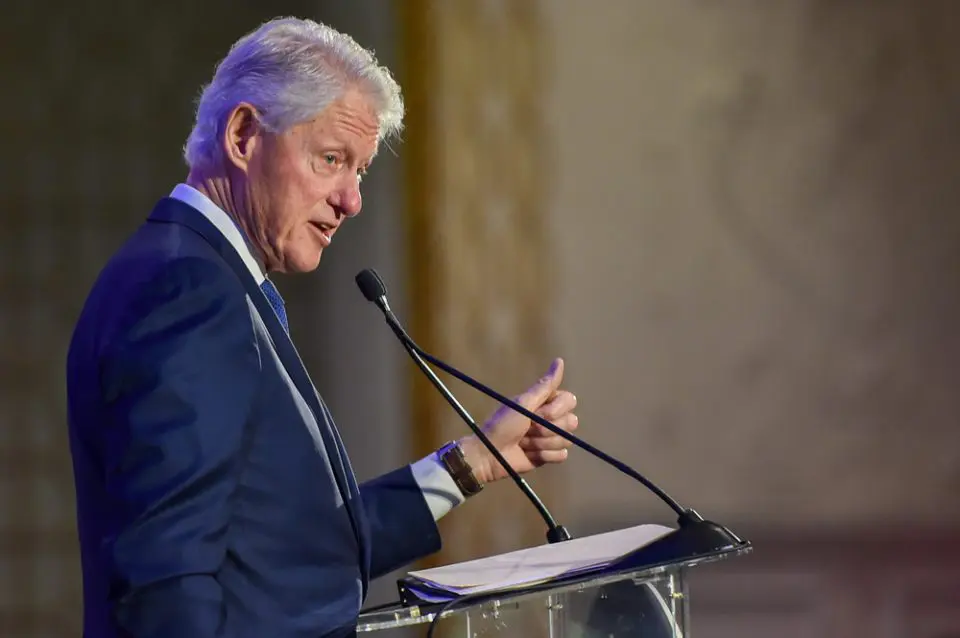Clinton’s health journey navigating resilience and recovery

Current medical situation
Former President Bill Clinton’s recent hospitalization at MedStar Georgetown University Hospital has sparked much attention. The 78-year-old former commander-in-chief was admitted after experiencing a fever, which led medical professionals to begin a thorough evaluation and testing process. While details of the hospitalization remain under wraps, initial reports indicate that Clinton is in stable condition, alert, and responsive. Sources suggest that the fever was likely not a major cause for concern, though ongoing observation will be key in ensuring his continued recovery.
Understanding the medical context
Clinton’s health journey has been one marked by several significant medical procedures and health challenges. Since leaving office, the former president has faced numerous health scares, with some medical events capturing more public attention than others. His history of cardiac issues began in 2004 when he underwent a quadruple bypass surgery to address underlying heart disease. In 2010, Clinton needed a coronary stent placement to manage blockages in his arteries. These procedures, along with his continued efforts to manage his health through regular checkups and lifestyle changes, have contributed to his resilience in the face of his health challenges.
Clinton’s decision to lead an active life despite these hurdles has helped shape his post-presidency legacy. His public appearances at political events, as well as his dedication to charitable causes, serve as testaments to his determination to continue making a difference. However, his ongoing medical care and interventions have underscored the importance of staying vigilant about one’s health, even after leaving the highest office in the land.
Timeline of health developments
Clinton’s medical history includes a variety of health incidents, each of which has impacted both his personal and public life. In 2004, his cardiac issues took center stage after his quadruple bypass surgery. Since then, Clinton has been actively involved in promoting heart health awareness, both for himself and others. His 2010 procedure involving the coronary stent placement was seen as a critical moment in his ongoing health journey, but Clinton’s recovery from both surgeries was swift, and he went on to live an active and busy life.
In 2021, Clinton’s health took another turn when he was hospitalized for a complex urological infection. This admission, though not as widely publicized as his heart procedures, required extensive treatment. His hospital stay lasted several days, and medical staff provided round-the-clock care while he recuperated. Despite these past incidents, Clinton has remained engaged with the public, often participating in important political discussions and Democratic Party events.
This most recent hospitalization is simply the latest chapter in a health story that has spanned over two decades. Clinton’s ability to navigate through these medical challenges has proven his resilience. However, each health issue is a reminder that even former presidents are not immune to the realities of aging and the wear-and-tear on the human body.
Impact on public engagement
Despite his health challenges, Clinton’s ability to remain a fixture in public life has not wavered. His participation in significant Democratic Party events, political commentary, and global philanthropic efforts has allowed him to stay relevant in the political sphere, even long after his presidency. Clinton’s presence at events, particularly in high-stakes moments, has been described as influential in shaping public discourse. He is often called upon to lend his voice to discussions on important social issues, demonstrating that, while his health may require occasional attention, his influence and ability to engage have not diminished.
This blend of resilience and commitment to public service speaks to Clinton’s core character. Though his physical limitations may slow him down, they have not deterred his drive to remain involved in the political world and beyond. This ongoing commitment to making a difference underscores the notion that a former president can continue to lead in different capacities. His efforts have shown that even in retirement, public figures have much to offer in terms of leadership, and their presence can carry great significance.
Medical care protocol
High-profile patients, particularly those with complex medical histories, require a specialized approach when it comes to healthcare. Clinton’s case is no different. MedStar Georgetown University Hospital has a well-established protocol for treating public figures, ensuring that their care is both thorough and discreet. Clinton’s doctors are following medical best practices to monitor his condition and provide the necessary treatment.
Clinton’s previous medical procedures have led to a comprehensive medical record, which is consulted regularly to guide his ongoing care. By utilizing the best healthcare services available and taking into account his previous surgeries, medications, and health history, doctors are able to provide Clinton with a level of care tailored to his specific needs. Transparent communication from the hospital has also played an important role in keeping the public informed about Clinton’s progress, though it is clear that much of his treatment remains confidential to protect his privacy.
Public response and support
The news of Clinton’s hospitalization has naturally generated widespread public interest. As one of the most recognizable figures in American politics, Clinton’s health status is of particular concern to both his supporters and critics alike. His hospitalization is viewed not just as a personal health issue, but as a moment of reflection on the broader implications of aging public figures.
Public officials, medical professionals, and political figures have been quick to express support for Clinton and offer well-wishes for his recovery. At the same time, the news has prompted a discussion about the health of public leaders, especially those who have reached such advanced ages. Clinton’s hospitalization has served as a reminder of the importance of supporting aging leaders, both emotionally and through ongoing health monitoring.
Looking forward
As the evaluation process continues, Clinton’s recovery and potential return to public life will undoubtedly be watched closely. His recent health scare is yet another reminder of the importance of ongoing health monitoring, particularly for public figures with well-documented medical histories. Despite this setback, Clinton’s strong track record of recovery and resilience bodes well for his future.
Looking forward, the situation also raises questions about the ability of older public figures to maintain their roles in leadership, given the physical and mental toll that such responsibilities can take. Clinton’s handling of his medical challenges, paired with his ongoing public service efforts, demonstrates that with the right care and support, public figures can continue to play meaningful roles even as they age.














